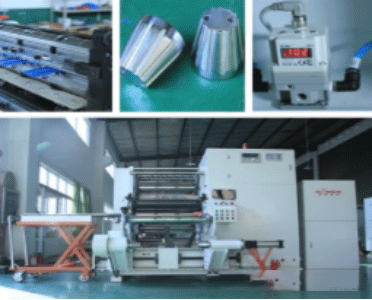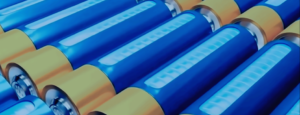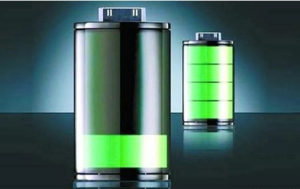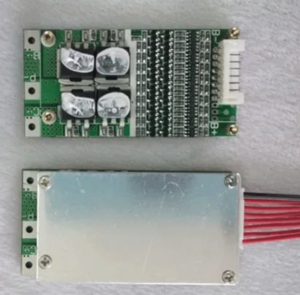Lithium batteries are an important energy storage device with the advantages of high energy density, long life, and lightweight. Therefore, they are widely used in electric vehicles, energy storage systems, mobile communications and other fields. In the process of manufacturing lithium batteries, die-cutting and slitting are two common cutting processes. This article will introduce and analyze die-cutting and slitting in detail from the aspects of principles, process flow, precautions and development trends.
1. Principles of die-cutting and slitting
Die cutting is a process that uses steel molds to cut the positive and negative electrode materials of lithium batteries. The shape and size of the mold are the same as those of the positive and negative electrodes of the lithium battery. By placing the positive and negative electrode materials on the mold and applying a certain amount of pressure, the positive and negative electrode materials are closely combined with the mold, and the purpose of cutting is finally achieved. The die-cutting process has the advantages of high efficiency, high precision, and low cost, and is suitable for mass production.
Slitting is a process that uses rotating blades to cut the positive and negative electrode materials of lithium batteries. The principle of slitting is to place the positive and negative electrode materials on the cutting table and use the rotating blade to cut the positive and negative electrode materials. The slitting process has the advantages of high flexibility, wide application range, and high production efficiency, and is suitable for small batch production and research and development stages.
2. Characteristics of die-cutting and slitting processes
1. Die cutting

Die cutting is to use a special die to cut a large area of material into the required shape. Die-cutting is usually used to cut lithium battery electrode sheets, which has high production efficiency and high cutting accuracy, and can ensure the consistency of the size of the electrode sheets.
2. Cutting

Slitting is to cut a large area of material into thin slices, and is often used to cut lithium battery particles to obtain a larger specific surface area and better reaction performance of the material. The slitting methods include manual slitting, automatic slitting and laser slitting. Among them, laser slitting technology is currently a relatively advanced slitting technology, with the characteristics of high cutting precision, fast processing speed, and no damage to materials.
3. The difference between die cutting and slitting
The main differences between die cutting and slitting lie in the cutting form, processing method, accuracy requirements and application fields.
1. Cutting form:
(1) Die cutting: A process of cutting a large area of material into a specific shape through a die. It is usually used to cut large areas of positive and negative electrode materials into the shape of electrode sheets.
(2) Slitting: The process of cutting large pieces of material into small particles or thin slices. It is usually used to cut positive and negative electrode materials into granular form for preparing electrode slurry.
2. Processing method:
(1) Die-cutting: Use a special die for processing, usually requiring a die-cutting machine or die-cutting equipment.
(2) Slitting: Usually mechanical cutting or laser cutting is used for processing.
3. Cutting accuracy:
(1) Die cutting: usually has high cutting accuracy and can achieve the consistency and accuracy of electrode sheet size.
(2) Slitting: The cutting precision is relatively low and is usually used for processes such as preparing electrode slurries that do not require high precision.
4. Application areas:
(1) Die cutting: It is suitable for processing large quantities of electrode sheets and can achieve the consistency and accuracy of the size of the electrode sheets.
(2) Slitting: It is suitable for processing lithium battery sheets and plays an important role in improving the performance of lithium batteries.
4. Precautions for die cutting and slitting
1. Precautions for die cutting
(1) Production of molds: The production of molds needs to take into account factors such as the size, shape and accuracy of the positive and negative electrode materials. The production quality of the molds directly affects the die-cutting effect.
(2) Material selection: The die-cutting process is suitable for positive and negative electrode materials with higher hardness. For softer materials, it is easy to cause problems such as incomplete cutting or material deformation.
(3) Pressure control: The pressure of die-cutting needs to be controlled within a certain range. Too little pressure will cause incomplete cutting, and too much pressure will cause material deformation or damage.
2. Precautions for cutting
(1) Selection of blades: The selection of blades needs to take into account factors such as the hardness and thickness of the positive and negative electrode materials. The quality and size of the blades directly affect the slitting effect.
(2) Control of cutting speed: The cutting speed needs to be controlled within a certain range. Too fast a cutting speed will lead to incomplete cutting or material damage, and a too slow cutting speed will affect production efficiency.
(3) Control of cutting accuracy: The cutting accuracy needs to be controlled within a certain range. Too large an error will affect the quality of the product, and too small an error will affect production efficiency.
4. Development trends of die cutting and slitting
With the rapid development of new energy vehicles and energy storage markets, the demand for lithium batteries continues to increase, and the requirements for lithium battery manufacturing processes are also getting higher and higher. In the future, die-cutting and slitting processes will become increasingly intelligent and automated, and more attention will be paid to environmental protection and energy consumption control. In addition, as new materials continue to emerge, die-cutting and slitting processes also need to be constantly innovated and upgraded to meet the cutting needs of different materials.
To sum up, there are obvious differences between die-cutting and slitting in terms of cutting form, processing method, accuracy requirements and application fields. Each plays an important role in the lithium battery manufacturing process. In addition, die-cutting and slitting are common cutting processes in lithium battery manufacturing. The principles, process flows, precautions and development trends of the two have their own characteristics. In practical applications, it is necessary to select an appropriate cutting process based on production needs and material characteristics to ensure product quality and production efficiency.




